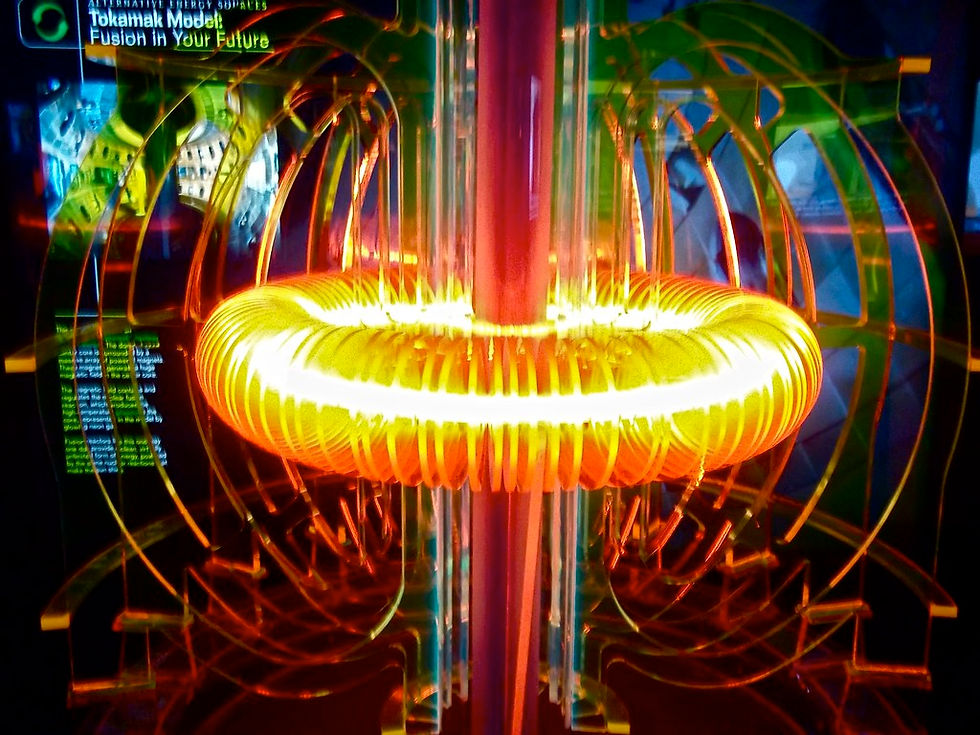Nuclear Fusion: Reactor Options
- Lucas Sebastian Maderna

- May 13, 2022
- 1 min read
As described previously, nuclear fusion reactors are based on heating a gas to create plasma. There are two ways to achieve the required heat ( 15 000 000 Cº) to make the hydrogen atoms fuse. One way is through inertial confinement, which uses pulses from superpowered lasers to implode a fuel pellet containing hydrogen. Another method is by magnetic confinement reactors, which use a magnetic field to squeeze plasma into a doughnut shaped chamber, where the nuclear fusion reaction occurs.
In my opinion, developed through all my research on this topic, magnetic confinement reactors are generally better as they are more efficient.
There are two types of magnetic confinement reactor models, which I have already mentioned in my previous article, the Tokamak and the Stellarator. The main nuclear fusion reactors today are:
The ITER reactor (Tokamak) in France, funded by China, the European Union, India, Japan, Russia, South Korea and the United States.
The Wendelstein 7 - X reactor (Stellarator) in Germany, funded 20% by the EU, and the rest by Germany.
Information provided by Kurzgesagt and Le Scienze

"File:Alcator C-Mod Tokamak Interior.jpg" by Mike Garrett is licensed under CC BY 3.0.



Super interesting!
Hallo Lucas thank you for your interesting work! It' a very complex procedure, but the nuclear fission of 1 gr of uranium can produce energia equalizzazione to the one that can be obtained by the combustion of 2800 kg of coal!! This is a very current theme
Very interesting! Thank you for all of this information 😃